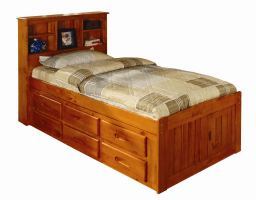Creating Magical Playrooms on a Budget: Sparking Creativity and Joy

Playrooms are the heart of a child’s imagination and a sanctuary for endless hours of fun. However, creating an inviting and stimulating play space doesn’t have to break the bank. With a little creativity, resourcefulness, and careful planning, you can transform a corner of your home into a magical playroom that both you and your child will love. In this blog, we’ll explore budget-friendly ideas and tips to help you design a playroom that sparks creativity, promotes learning, and brings endless joy to your little ones.
Plan and Organize
Before you dive into creating a playroom, start by planning and organizing the space. Assess the available area and consider the needs and interests of your child. Make a list of essential items such as storage solutions, seating, and play stations. Look for inspiration online, create a vision board, and establish a budget. By having a clear plan in mind, you’ll avoid overspending and maximize the potential of the space.
Repurpose and Recycle
One of the most cost-effective ways to furnish a playroom is by repurposing and recycling items you already have. Give new life to old furniture by repainting or refinishing it. Use crates or shelves to create storage spaces for toys and art supplies. Look for free or inexpensive items on online classifieds or in thrift stores. Get creative with your DIY skills and transform everyday objects into playroom decorations or educational materials.

Utilize Wall Space
Walls provide valuable real estate in a playroom. Take advantage of vertical space to create functional and visually appealing elements. Use chalkboard or whiteboard paint to turn a section of the wall into a drawing surface. Hang a fabric or mesh storage system for stuffed animals and toys. Install floating shelves to display books, puzzles, and favorite toys. Wall decals or removable wallpaper can add color and charm to the room without the commitment of permanent paint.
DIY Artwork
Artwork adds personality and creativity to any space. Get your child involved in the process by creating DIY artwork together. Set up a dedicated art corner with a table, easel, or a large sheet of paper taped to the wall. Use affordable art supplies like crayons, markers, and watercolors. Frame their artwork and proudly display it on the walls. This not only encourages their artistic abilities but also adds a personal touch to the playroom.
Sensory Play on a Budget
Sensory play is essential for a child’s development, and it can be done on a budget. Fill a plastic bin with rice, dried beans, or sand for tactile exploration. Create a sensory wall with various textures like bubble wrap, fabric scraps, and foam. Collect empty containers, lids, and kitchen utensils for water play. Incorporate nature by collecting leaves, stones, and pinecones during outdoor adventures. These simple, budget-friendly activities provide endless sensory stimulation.
Reading Nook
A cozy reading nook encourages a love for books and quiet contemplation. Create a comfortable seating area with cushions, bean bags, or a small sofa. Hang string lights or install a canopy for a magical touch. Utilize a bookcase or wall-mounted shelves to display books within easy reach. Visit thrift stores or garage sales for affordable books to expand your child’s library. This dedicated reading space will foster a lifelong love for reading.

Imaginative Play Zones
Encourage imaginative play by setting up dedicated zones within the playroom. Create a pretend kitchen using cardboard boxes, old pots, and pans. Use a clothesline and clothespins to create a miniature laundry area. Set up a dress-up corner with costumes, hats, and accessories. These zones provide opportunities for storytelling, role-playing, and developing social skills without spending a fortune on pre-made playsets.
Lighting and Ambiance
Lighting can set the mood and transform a playroom into a magical space. Utilize natural light as much as possible by positioning play areas near windows. Hang string lights or fairy lights for a whimsical atmosphere. Use colorful lampshades or DIY lanterns for soft and cozy lighting. Experiment with different lighting options to create a warm and inviting ambiance that enhances the playroom experience.
Rotate Toys
Maximize the use of limited space and keep the playroom fresh by regularly rotating toys. Store some toys in labeled bins or baskets and swap them out every few weeks. This approach not only keeps the playroom organized but also brings renewed excitement and prevents toys from becoming monotonous. It’s an effective way to keep playtime engaging without constantly purchasing new toys.
Involve the Child
Lastly, involve your child in the process of creating their playroom. Ask for their input on colors, themes, and decorations. Let them participate in organizing their toys and personalizing the space. By involving them, you foster a sense of ownership and pride in their playroom, encouraging them to take care of it and fully enjoy the space you’ve created together.
Conclusion
Creating a magical playroom on a budget is entirely possible with a little creativity, planning, and resourcefulness. By repurposing, recycling, and incorporating DIY elements, you can transform any corner of your home into a captivating and engaging space for your child. Remember to utilize wall space, provide sensory play opportunities, and create cozy reading nooks. Involve your child in the process, and don’t forget to rotate toys to keep playtime fresh. With these budget-friendly ideas, you’ll design a playroom that sparks creativity, promotes learning, and brings endless joy to your little ones, all without breaking the bank. Get ready for hours of imaginative play and cherished memories!









